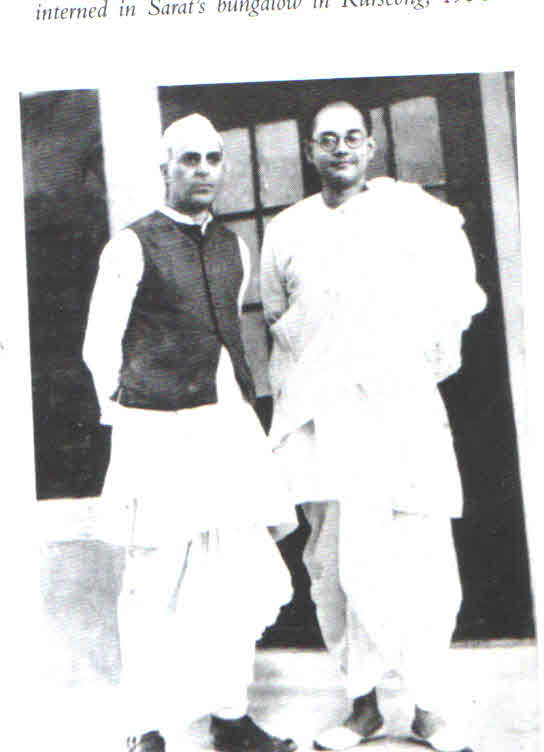Bose would have challenged Nehru for the post of Prime Minister.
In the 1920s, the two upcoming Congress leaders were Jawaharlal Nehru and Subhas Chandra Bose. Netaji Bose was born on 23 January 1897. He was eight years younger to Jawaharlal Nehru. Bose too belonged to a well to do Kayastha family. He qualified for the ICS, but to the dismay of his family, he resigned. Returned to India and plunged into the freedom movement. His first meeting with Gandhji was not a success. C.R. Das was Netaji’s hero. But he died in 1925.
What would have been India like if Netaji Bose had not died in the air crash on 18 August 1945 in Taiwan?
One. He would have given Nehru run for his money after returning to India. The British would have put him in jail, but the clamour for his release would have been so great that he would soon have been released.
Two. Gandhiji did not see eye to eye with Bose. But Bose would have challenged Nehru for the post of Prime Minister. There was no love lost between Nehru and Patel. If the Sardar had sided with Bose even Gandhiji would have found it difficult to get Nehru to become Prime Minister.
A more profound consequence would be unavoidable split in the Congress. But these are the if’s and buts of history.
***
Svetlana was the daughter of Joseph Stalin. Her mother had committed suicide in 1932 in the Kremlin. Stalin died in March 1953. Svetlana’s life changed immediately. She was deprived of all her privileges. These were restored by Khrushchev in 1955.
Svetlana fell in love with Brajesh Singh, an uncle of Dinesh Singh, who in 1967 was a member of Indira Gandhi’s Cabinet. Brajesh Singh was a committed Communist. He had lived in Moscow for many years. Svetlana and Brajesh Singh fell in love. Brajesh Singh was seriously ill. The doctors recommended a shift to a warmer climate. Svetlana was not permitted to accompany her husband to India. So Brajesh Singh came to India, where he died. Svetlana was permitted to come to India for immersing her husband’s ashes in the Ganga. She stayed with Dinesh Singh. I had a glimpse of her at No. 1 Safdarjung Road, when she came to meet Indira Gandhi.
On 23 March 1967, the American Ambassador, Chester Bowles, met the Prime Minister in Parliament House. He brought a memo, which Svetlana had given to a member of the American Embassy on 6 March. Ambassador Bowles said that the memo was a very moving document written in Svetlana’s own hand. He requested the Prime Minister to look at it. Indira Gandhi told the American Ambassador that the Soviets were putting the blame on India for allowing Svetlana to stay in India for so long and now allowing her to leave India. “We had nothing to do with her departure”, she said. Bowles said, Svetlana had played her cards well. She had not told anybody about what she had in her mind. On 7 March, she lunched with the Russian Ambassador and asked if she could remain in India. Her request was promptly rejected. The Ambassador handed back her passport and an air ticket to Moscow. He asked Svetlana to leave the next day.
Svetlana got into a taxi and drove to the US Embassy to seek asylum. This was all handled by the CIA. It was decided that she would take a flight to New York. For the US to get Stalin’s daughter to the US was a huge achievement. The Soviets were furious. Our Ambassador in Moscow, Kewal Singh was given a dressing down by Foreign Minister Gromyko.
After reading the memo, the Prime Minister handed it back to Bowles. After the Ambassador left, I asked PM whether the memo was given to her to keep. She said, “Find out from the Ambassador.” I ran out of her room and caught up with Chester Bowles in the corridor. He said it was not his intention to leave the memo with the Prime Minister. However, two days later, he sent a copy.
In 1967, Svetlana’s book, “Letters to a Friend” appeared in London. It gave an intimate and touching account of her childhood in Kremlin. Her father doted on her. He would also be inconsiderate. Once he reprimanded her for wearing a frock above the knee. Svetlana was no writer. From time to time, she did come out with creative passages. “This is such a wonderful morning, a forest morning. Birds are singing and sunlight is filtering through the green half darkness of the forest.” Her father used to write to her “baby letters”. These were caring and loving. The cruel murderer had a softer side, which he seldom revealed.
After a few weeks, Indo-Soviet relations were restored to the pre-Svetlana incident. They became closer when Indira Gandhi went to Moscow in November to participate in the 50th anniversary of the Russian Revolution.
Svetlana became an American citizen, married and wrote her autobiography. She was not a natural writer. I found the book disappointing.
After some time, the Americans had no use for her. She faded away.

